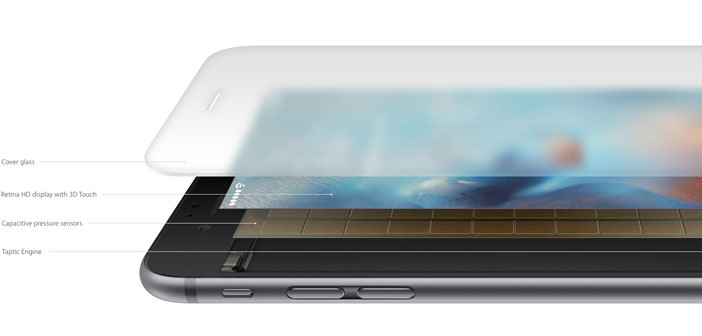A new patent granted to the Cupertino house allows you to interact with multi-touch display with no need to physically touch them. A series of proximity sensors detects one or more fingers and active and translates the input detection for the interface.
Apple continues to push forward the development of new technologies with the aim to improve the interaction with the electronic devices. In the course of 2015, the introduction of 3D Touch, both on portable Mac, both on the iPhone and Watch, showed how you can speed up the execution of certain activities by exploiting a pressure sensing system exerted on the touch surface of the touch screen ( or trackpad).
The house of Cupertino could further advance the work of perfecting the forms of interaction with the UI thanks to the subject of a recent patent technology. While the 3D Touch requires a physical contact with the screen, the model of interaction described in the patent called ” Proximity and multi-touch sensor detection and demodulation ” (published by the USPTO on February 2 last year) provides the ability to enable, disable, call up specific options and portions of the screen by simply bringing the finger to the display and without requiring physical contact.

To achieve the purpose, Apple has provided for the integration of a series of proximity sensors integrated in the touch panel (or at least in the vicinity of the same) can detect a finger, a body part or other object, translating the image detected in the input through which you can interact with the device interface. Among the various solutions proposed by the House of Cupertino also include those based on the integration of IR sensors. Interesting to note that the system is also able to detect more than one finger, allowing, in theory, an interaction type of multi-touch with the interface (useful, for example, if the element to manage both a virtual keyboard).
The patent relates to a technology capable of potentially find use both in smartphones, is in notebook scope, but, between the possibility and the actual execution of the step is not properly short. Apple is not the only one to have walked the path of the input tools that do not provide direct touch with the screen, with obvious advantages related to the number of options and controls available to the user (think also the ability not only to allow the system to detect a ” touch ” single, but also the ” air gestures, ” or hand movements that extend further more complex forms of interaction).
Samsung with Air View, integrated in the devices Galaxy, has provided a similar technique, and also (old) Nokia had planned a similar form of control in the Windows Phone ” McLaren “, then canceled by Microsoft. Nothing so very innovative, so that – which still did not prevent Apple to get the patent – and yet to be proven the actual will of the House of Cupertino to employ in practice this technology into a commercial product.

